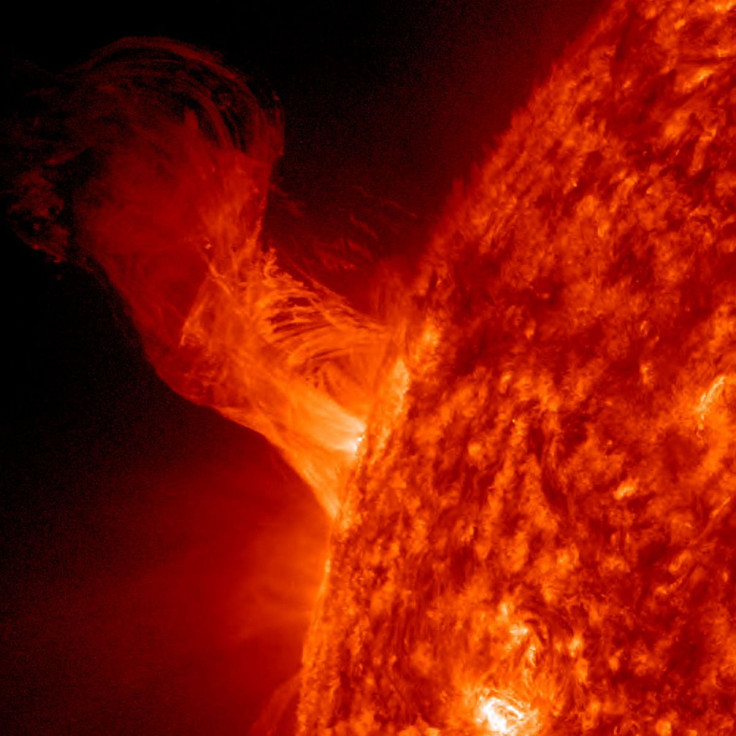Satellite Captures Rare Solar Tsunami, Scientists Use Data To Measure Sun's Magnetic Field

With the help of two powerful satellites, scientist have observed a rarely seen phenomenon on the sun's surface: a "solar tsunami."
According to a statement from University College London, the event -- known formally as coronal mass ejection (CME) -- was able to be viewed with the help of the Japanese satellite Hinode. The satellite is part of a pair of satellites that have been studying the sun. Hinode has been orbiting the star since 2006 and NASA's Solar Dynamics Observatory (SDO) joined the satellite in 2010.
The satellites use ultraviolet light to observe and track the movement of the "waves" through their powerful telescopes.
Dr. David Long of University College London said he and his team were able to view the equally elusive EIT waves following a CME. The EIT shock waves carry both magnetic fields and hot plasma from the burst of energy.
"These EIT waves are quite tricky - they're very random and they're relatively rare," Long told BBC News. "We need to be in the right place at the right time; this has been a long time coming."
The satellite showed the ultraviolet light given off from the wave, allowing the team to calculate its the speed -- 620 miles per second -- as well as estimate its temperature over over one million degrees reports HNGN.
The speed of the wave is determined by the strength of the magnetic field through which they are passing. Using the data collected from both satellites, the team calculated the strength of the suns magnetic field in the areas away from the CME, known as the "quiet corona."
With the research it was revealed that the magnetic pull of the sun's atmosphere is fairly weak.
"We've demonstrated that the Sun's atmosphere has a magnetic field about ten times weaker than a normal fridge magnet," Long said.
He added that when CMEs are usually observed they are headed "straight at us," making it "difficult to measure how fast it's coming at us or how strong it is."
The magnetic field of Earth protects it from the "solar tsunamis," deflecting the energy of the explosion when they head toward the planet. But satellites and other forms of technology can be disrupted.
"These are rare observations of a spectacular event that reveal some really interesting details about our nearest star," said Long. "As our dependency on technology increases, understanding how these eruptions occur and travel will greatly assist in protecting against solar activity."
For a visual example of solar magnetism, watch the video from NASA's ODO below:
© Copyright IBTimes 2025. All rights reserved.






















